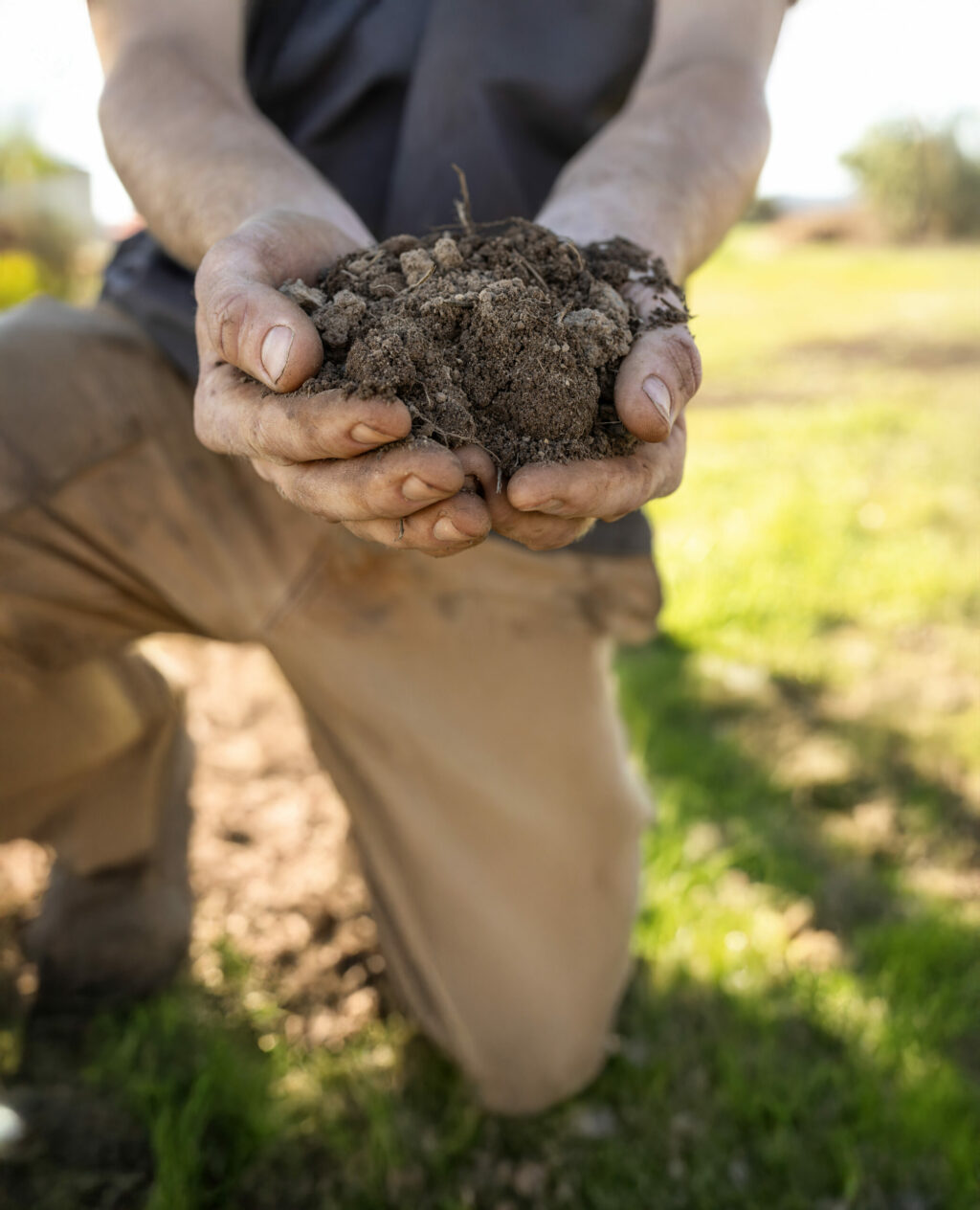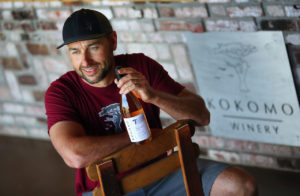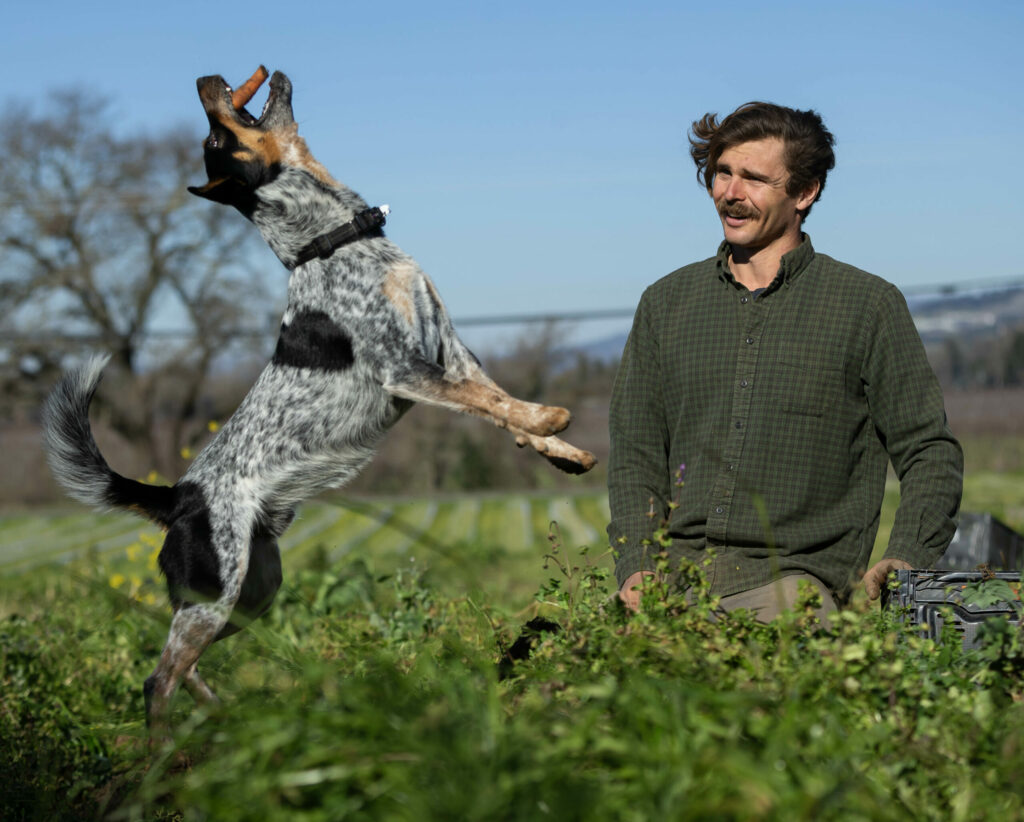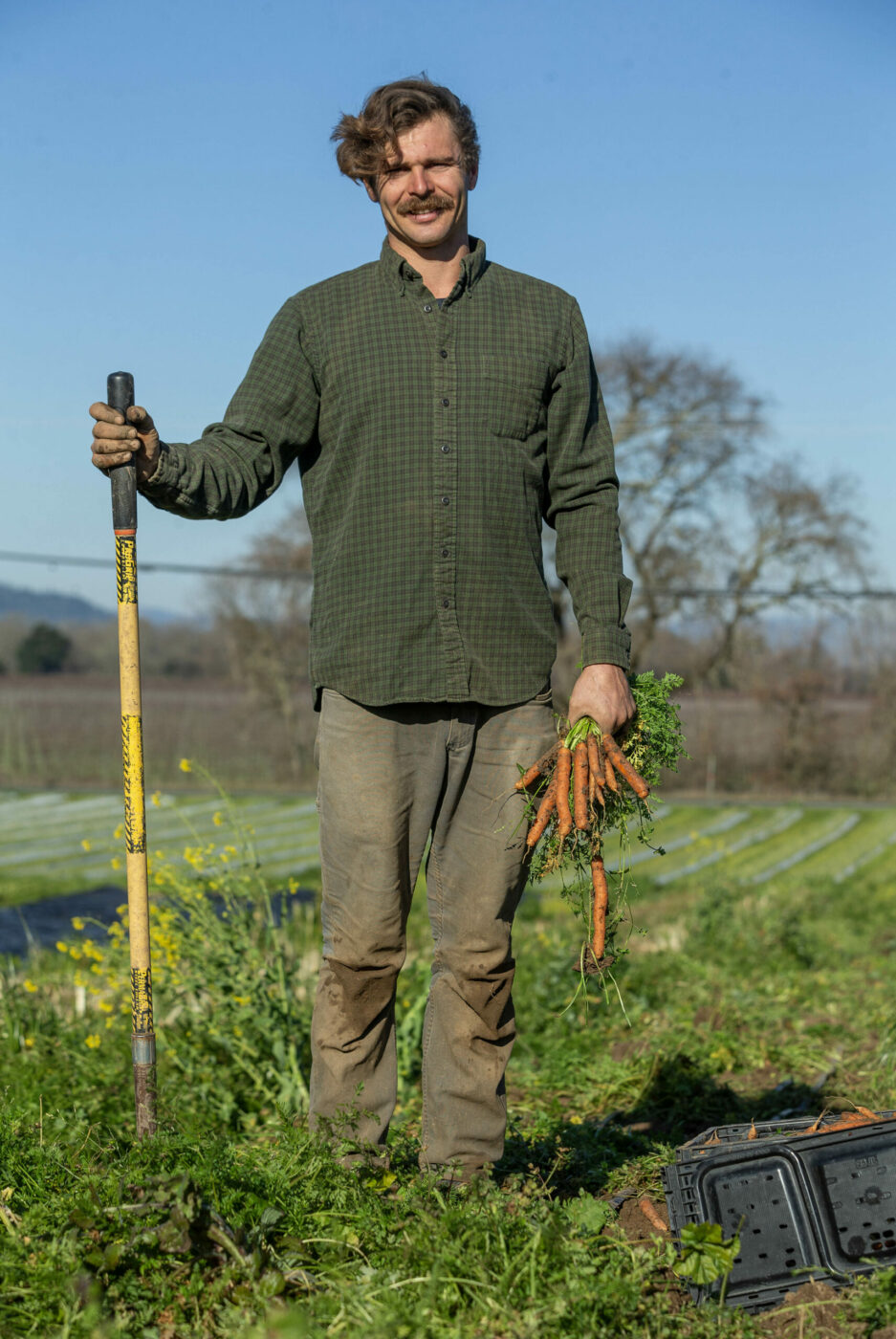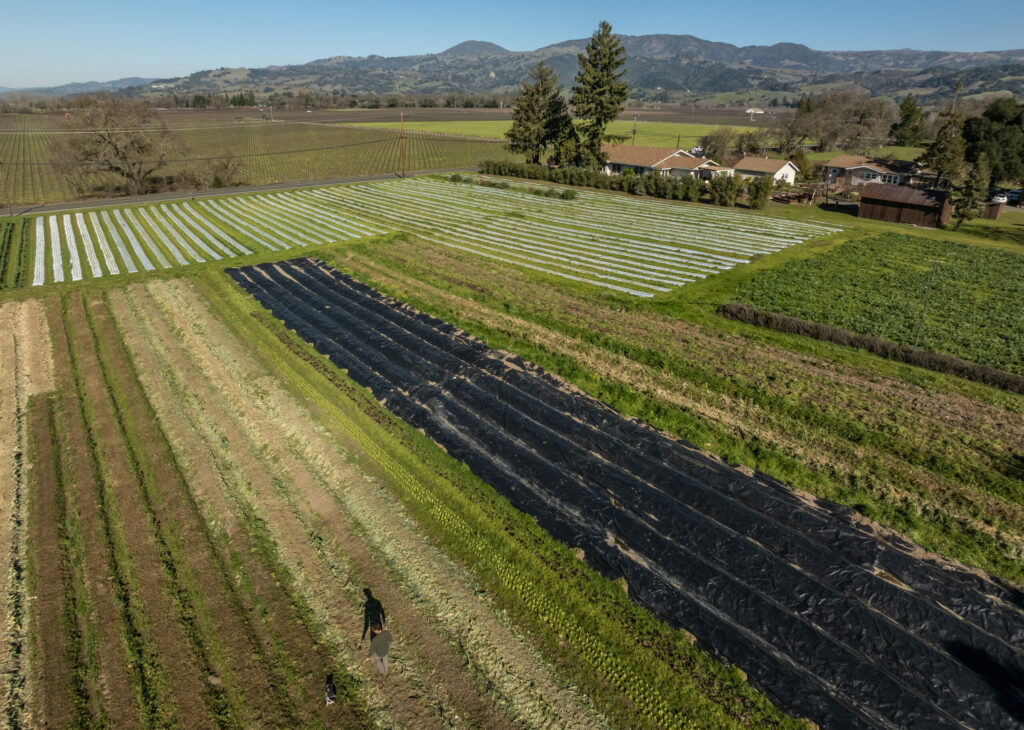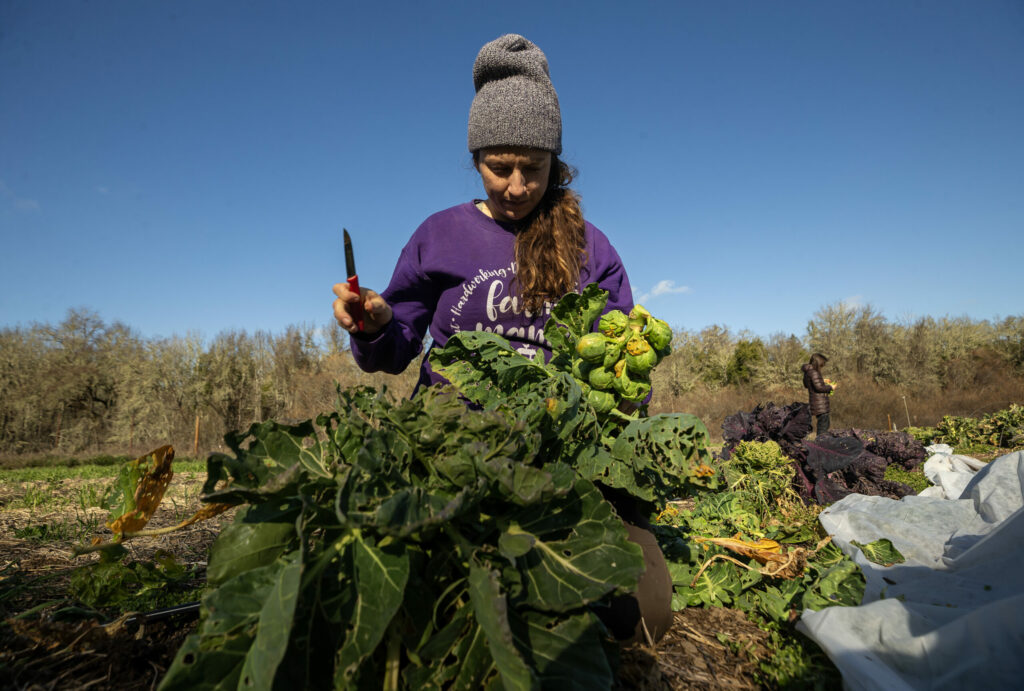Armed with a degree in sustainable agriculture from UC Davis, Sammy Tookey set out to become a farmer. He had grown up around farming in Orange County, where his mother worked on a farm and eventually married the farmer.
Following his girlfriend to Sonoma County, Tookey first went to work on someone else’s farm, learning how to turn over fields and grow vegetables at Coyote Family Farm in Penngrove. But, after two years, he set an ultimatum for himself. “I kind of put a time limit on it,” he says. “I decided if I’m gonna be a farmer, I gotta go for it now or switch it up and try something different.”
It’s the dream of every row-crop farmer — to find a small plot and make a go of it on your own. But farmland in Sonoma County is not easy to find.
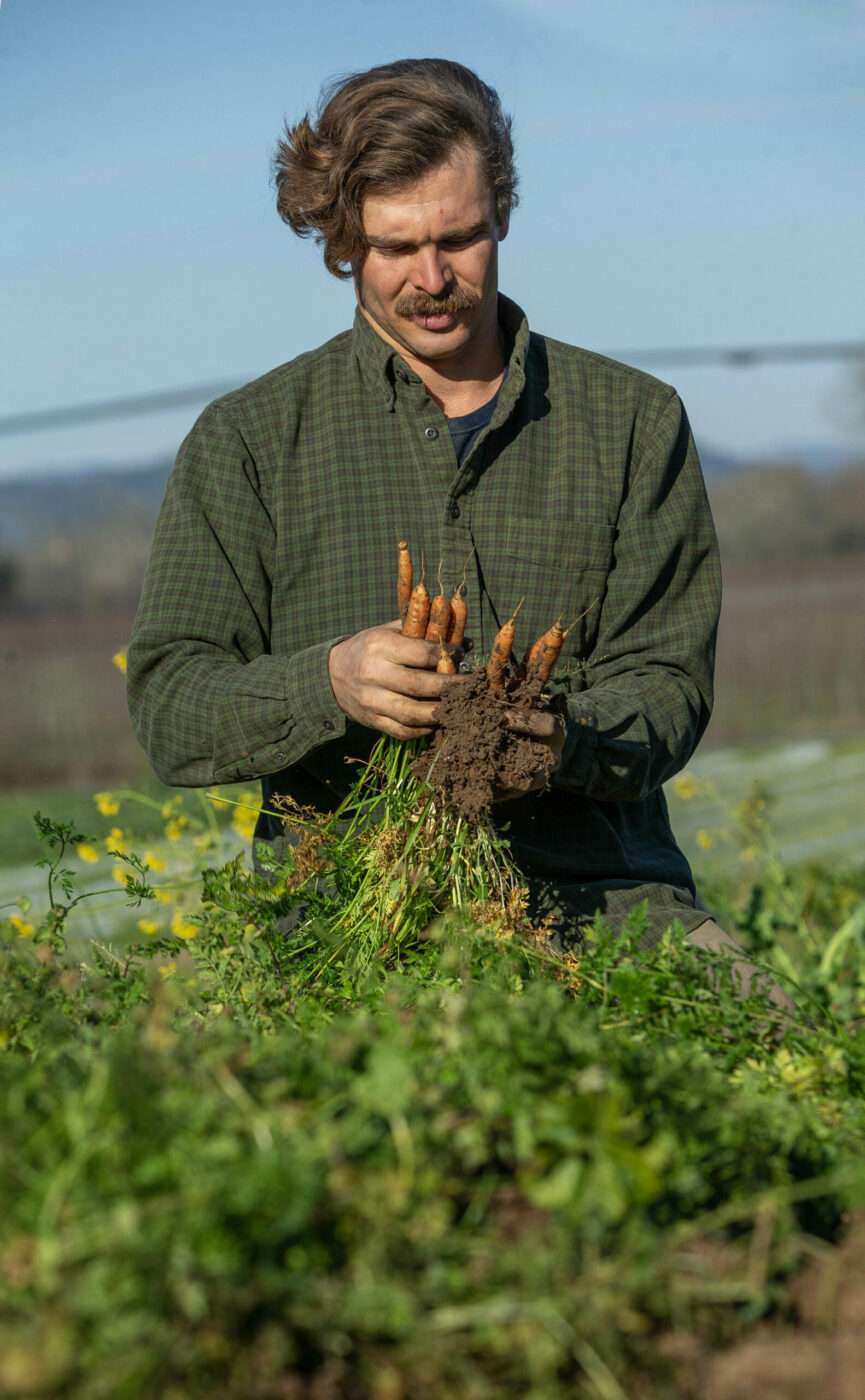
Instead of a hoe, Tookey grabbed a pen and wrote out a “one-pager,” describing his vision as a farmer and what he was looking for in a piece of land. Instead of a tractor, he hopped on his bicycle and rode up and down Eastside and Westside roads in Healdsburg, dropping flyers in mailboxes. “I did that until I realized it’s illegal to put things in people’s mailboxes, and someone got really mad,” he says.
So, like any farmer, Tookey changed his game plan. He started posting flyers on bulletin boards around the county, from the community board in Forestville to one at Harmony Farm Supply in Fulton. A few days after posting a flyer at Hunt & Behrens feed store in Petaluma, he got a call from farmer Zureal Bernier of Bernier Farms. His parents, longtime grapegrowers and garlic farmers Paul and Yael Bernier, were retiring. And a few acres were opening up on their farm in Alexander Valley if Tookey was interested.
“It was like winning the lottery,” Tookey says. Not only did he get shared use of a cooler and a shed in the deal, he also got help with tractor work — a bonus, since he didn’t own a tractor. And he took over Yael Bernier’s regular stall at the Healdsburg Farmers Market. A few months later, through a regular market customer, he connected with 8 additional acres on Westside Road and is now cultivating a total of 10 acres as Tookey Farms.
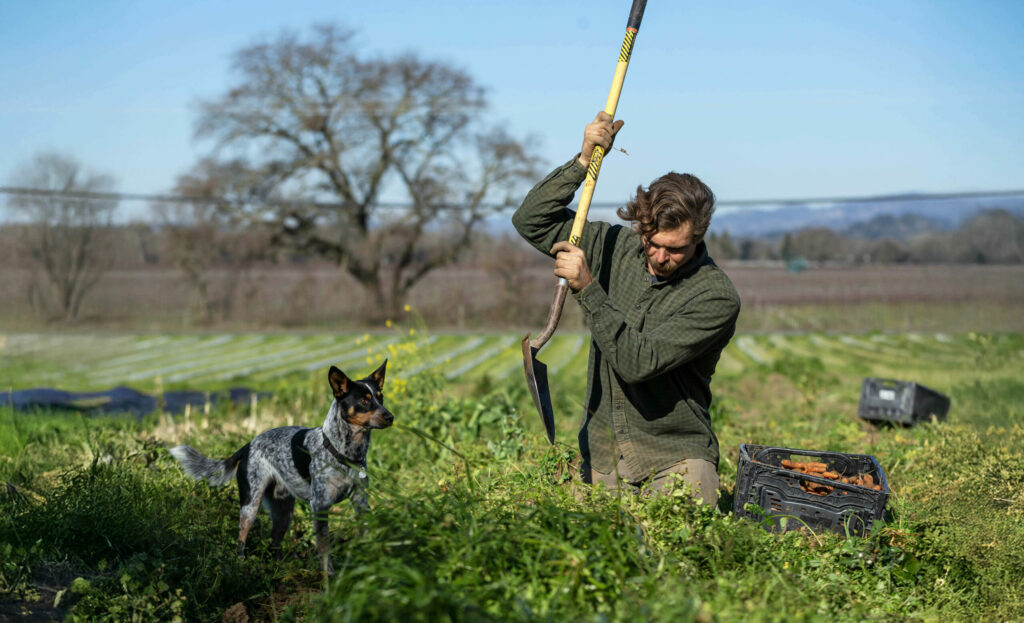
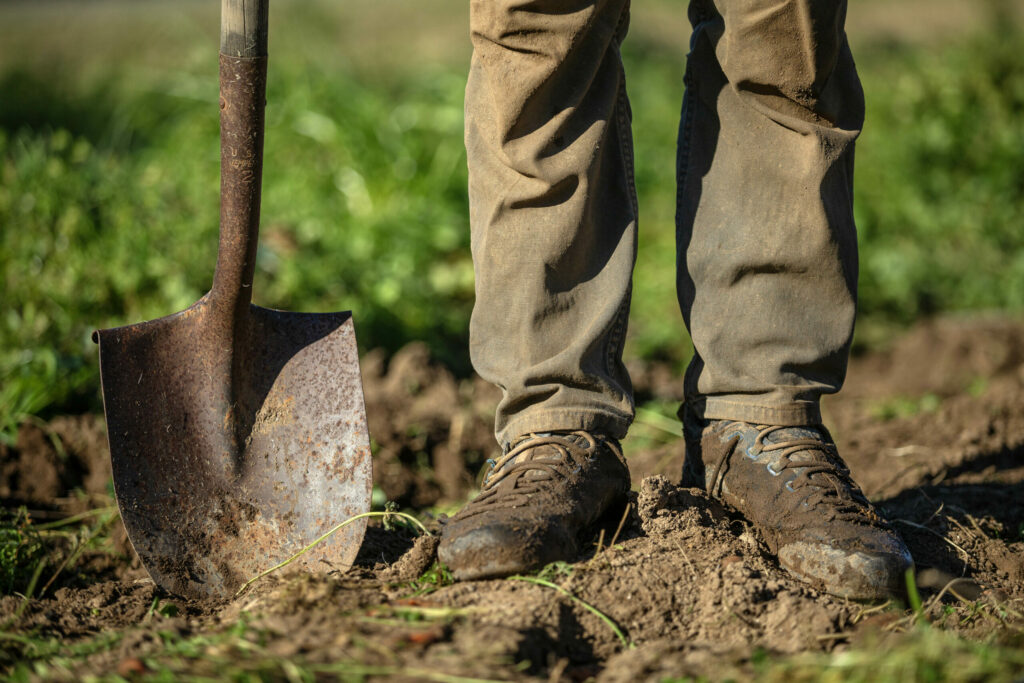
In the age of Instagram and California FarmLink listings, Tookey’s two-wheeled flyer campaign may seem old school, but it shows the lengths that farmers will go to find good earth in Sonoma County.
When the Berniers bought land in Dry Creek Valley in the mid-1970s, they paid $32,000 for 2.5 acres. By the late ’90s, when they purchased another 2.5 acres from a neighbor, demand for land had shot up, and they paid $900,000. Now, a quarter of a century later, land prices have continued to skyrocket.
It means the mythical, family-run row-crop farm — the dream held by George and Lenny in “Of Mice and Men” and the impossible goal of “The Biggest Little Farm” documentary — is getting harder and harder to come by in Sonoma County. The structural barriers of race and class access to Sonoma County farmland has evolved into a super-competitive game of Ag Monopoly. Housing shortages, low farmworker wages, the lack of initial capital to invest, and the widespread cultivation of grapes all play a role in squeezing out small veggie farmers.
In the last USDA survey of Sonoma County farmland in 2022, grapes accounted for 72,358 acres, forage land came in at 30,192 acres and vegetable farms amounted to 656 acres.
“I was a small farmer for 10 years,” says Sonoma County Supervisor Lynda Hopkins, who previously ran local Foggy River Farm with her husband. “I felt very lucky that I was able to farm on my husband’s family’s land. But, for a lot of people, just finding that property and having it be secure is the biggest challenge of all.”
She’s seen countless scenarios where “someone will be leasing, and then they’ll be kicked off the property after they’ve made all the investments, amending the soil and installing the irrigation. So, having land security is critical to small farmers.” Land security also means knowing that there’s always next season’s crop, that you’re not going to be forced to miss a season’s worth of income from a CSA or uproot your business and need to find new customers.
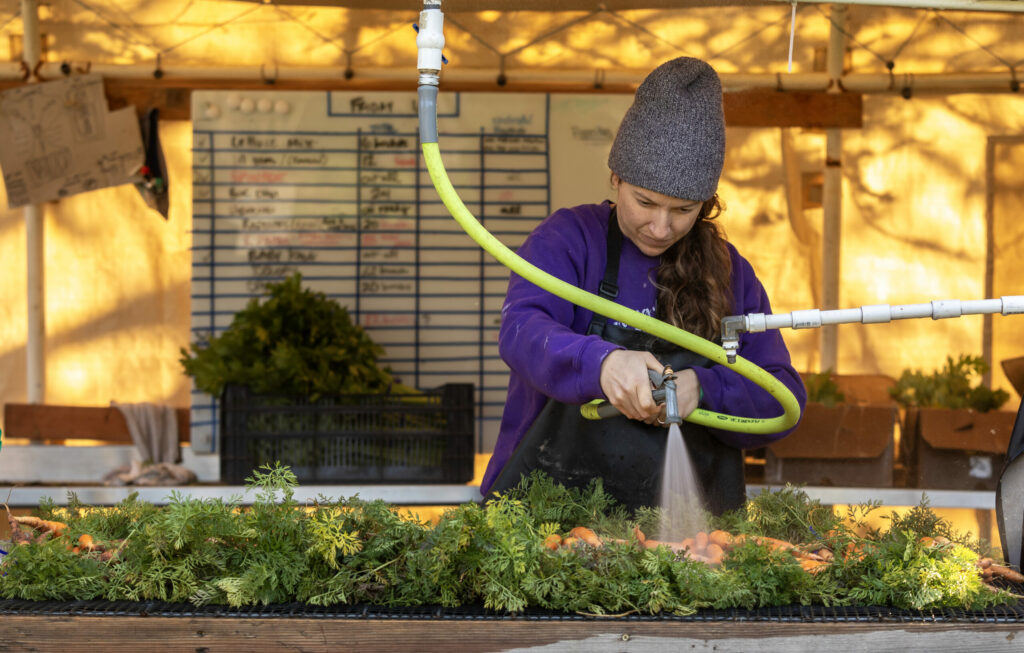
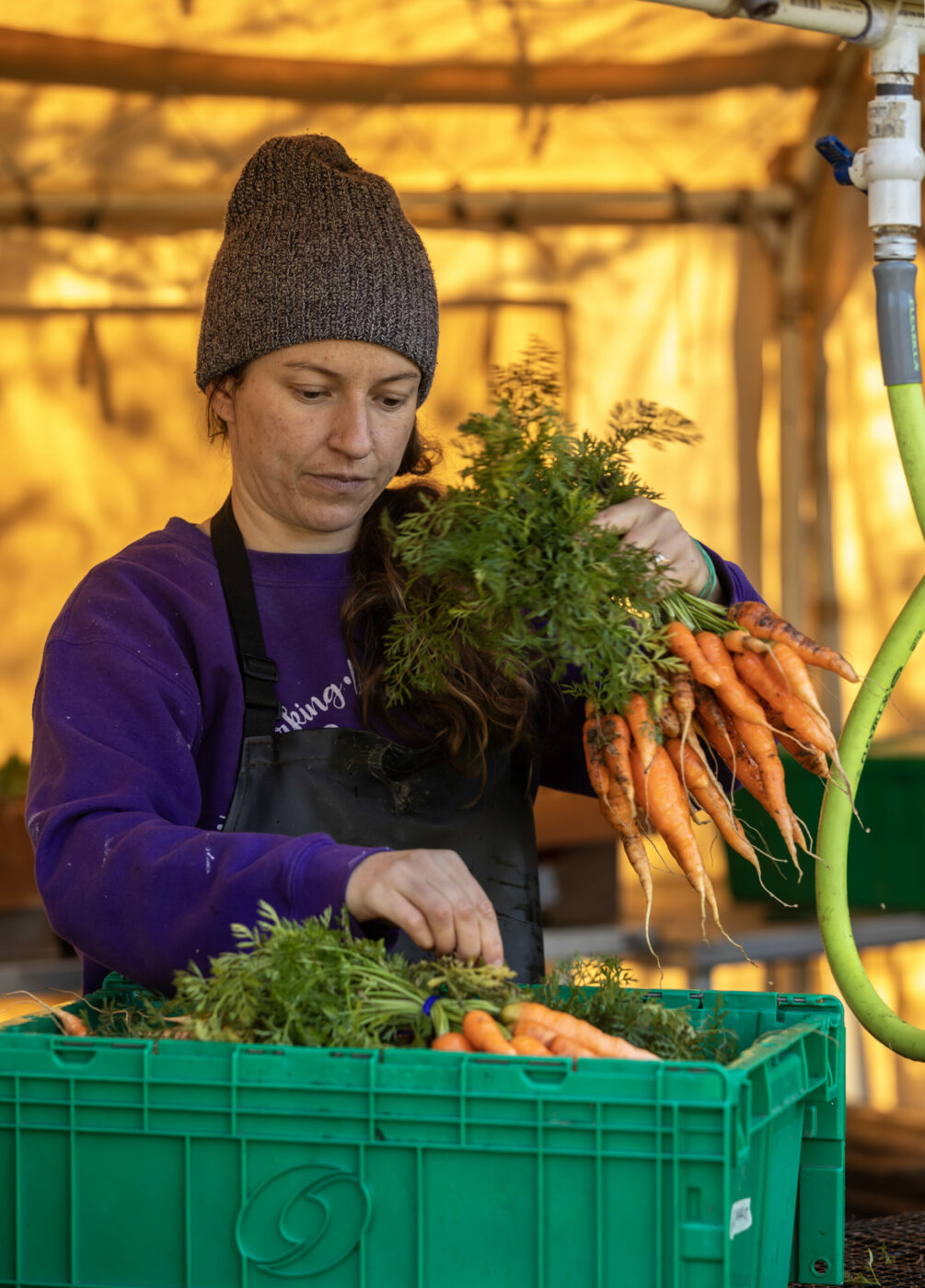
That security is exactly what was missing a few years back for Beet Generation Farm’s Aleta Pierce and Andrew Lacanienta. They had been leasing 2 acres of private land in Sebastopol on a year-to-year basis — land in which they’d invested thousands of dollars for soil amendments, compost and mulch. “And one day the owners changed their mind and said, ‘We don’t actually want you here,’” remembers Pierce. “‘We want to have our own private garden.’”
So in 2022, Aleta posted a photo of the couple holding hands on Instagram, under the headline “We Are Seeking Land.” Tips and leads poured in from customers and supporters. Early options were a winery that reached out with an extra acre, a communal farm in Sebastopol, and lots of individual homeowners with extra property that would have required a sizeable up-front investment for irrigation, fencing and other infrastructure.
Nothing seemed like the right fit, until Pierce remembered her childhood stomping grounds in Forestville: Thomas Creek Ranch, an intentional community, with 12 households sharing 80 acres. It’s where she was born and lived until she was 7 years old. Bennett Valley Farm had grown flowers and a few crops on part of the land from 1988 to 2008, but the land currently lay fallow. When she reached out on a whim, the community was excited at the idea, says Pierce, telling her that they would love for the land to be farmed again.
There also happened to be a house available, which the couple recently closed on, so now they can realize another dream: living on the land they farm. “It really felt like divine timing for us landing here, because it was kind of everything we wanted,” she says.
One more farmer on her way home.
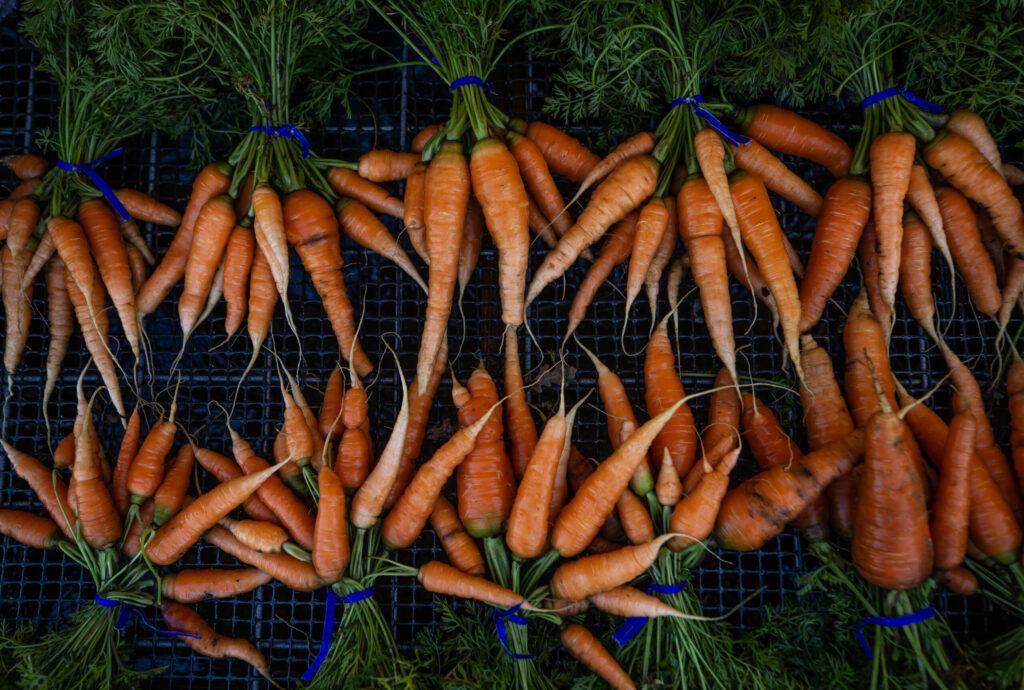
Talk to 50 row-crop farmers and you’ll get 50 different stories of how they staked their claim. Sometimes it’s a return to family land. After graduating from the Santa Rosa Junior College sustainable ag program, Paula Crews moved back to her family’s cannabis farm in Mendocino County, where she helps with the main cash crop and cultivates shiitake mushrooms. She’s also planning a plant nursery focused on native grasses.
But, without family connections, other hopeful farmers find it a tough row to hoe. “I feel like everybody’s holding on to their properties, and it’s kind of hard to break into such a niche community, especially when you’re a young farmer,” says 21-year-old student Jade Walker-Levine, who has worked multiple farm jobs over the past three years while studying sustainable agriculture at SRJC’s Shone Farm. “When you’re just kind of getting out there and you don’t really have much to back you up, and you’re trying to get in on a property, it can be intimidating. I feel like that is a really big factor of why a lot of people will kind of give up on looking for farmland.”
She says some people she knows will end up farming on a smaller scale, reaching out to friends who maybe have an acre to share. Some choose to leave the county altogether and seek cheaper land somewhere else, she says.
After Walker-Levine graduates this May, her dream is to run her own flower farm. Like other farmers, who say word of mouth and personal relationships are key, she already has a lead on leasing land to grow flowers at a lavender farm in west county, where she’s worked and bonded with the owner.
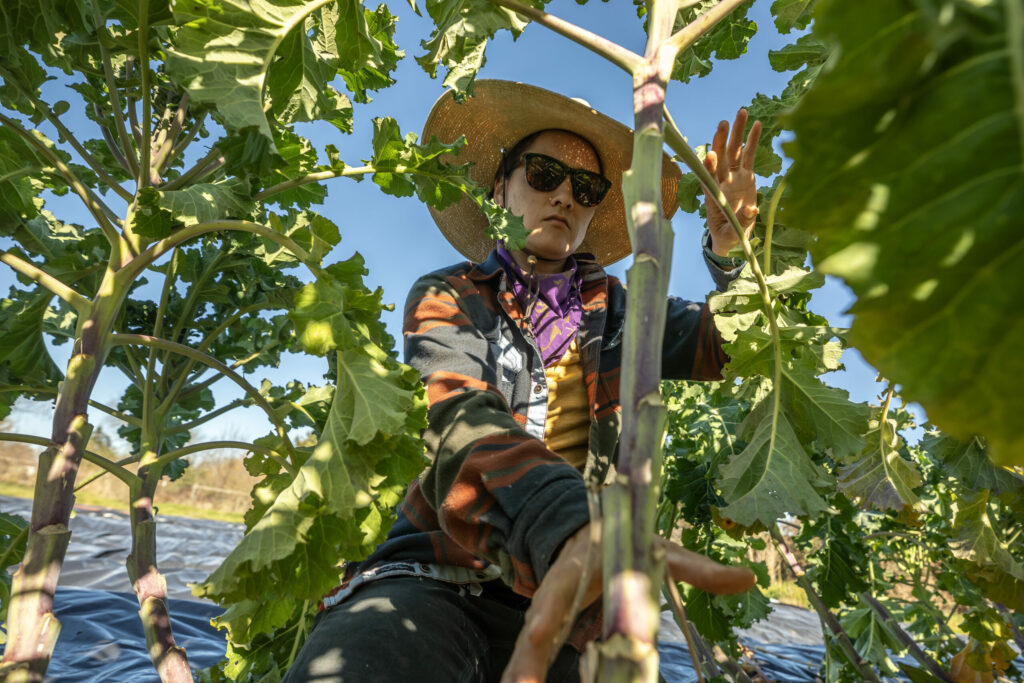
For farmer Reyna Yagi, a classic mentor-mentee relationship led her to the founding of Yagi Sisters Farm in Sebastopol. In 2018, Yagi began working with Red H Farm’s Caiti Hachmyer, who taught agroecology courses at Sonoma State University and hosted workshops that centered “farmer-to-farmer education models.” In 2023, as Hachmyer looked to scale back her day-to-day farming, she asked Yagi if she wanted to take over a plot she’d been leasing from landscape firm Permaculture Artisans, off Highway 116 in Sebastopol across from Midgley’s Country Flea Market.
“Looking at the lack of land access elsewhere, it was my chance to jump on it, whether I was ready or not,” said Yagi, who now sells produce from her three-quarters of an acre to Petaluma’s Jupiter Foods and Tenfold Farmstand, as well as Handline, Psychic Pie and Lunch Box restaurants.
Yagi, the granddaughter of Japanese immigrants, views her farm as a long overdue chance to right a wrong that occurred nearly 75 years ago. “I come from a farming family that is used to land-access challenges,” she says. Her grandfather and his brothers ran the once-thriving Yagi Brothers Farm in Stockton. During World War II, the roughly 1,000-acre parcel they had leased and farmed for years was taken away by the government, she says. “And they never got it back. They were eventually able to continue farming by leasing land from a family friend. But they never got their land back.”
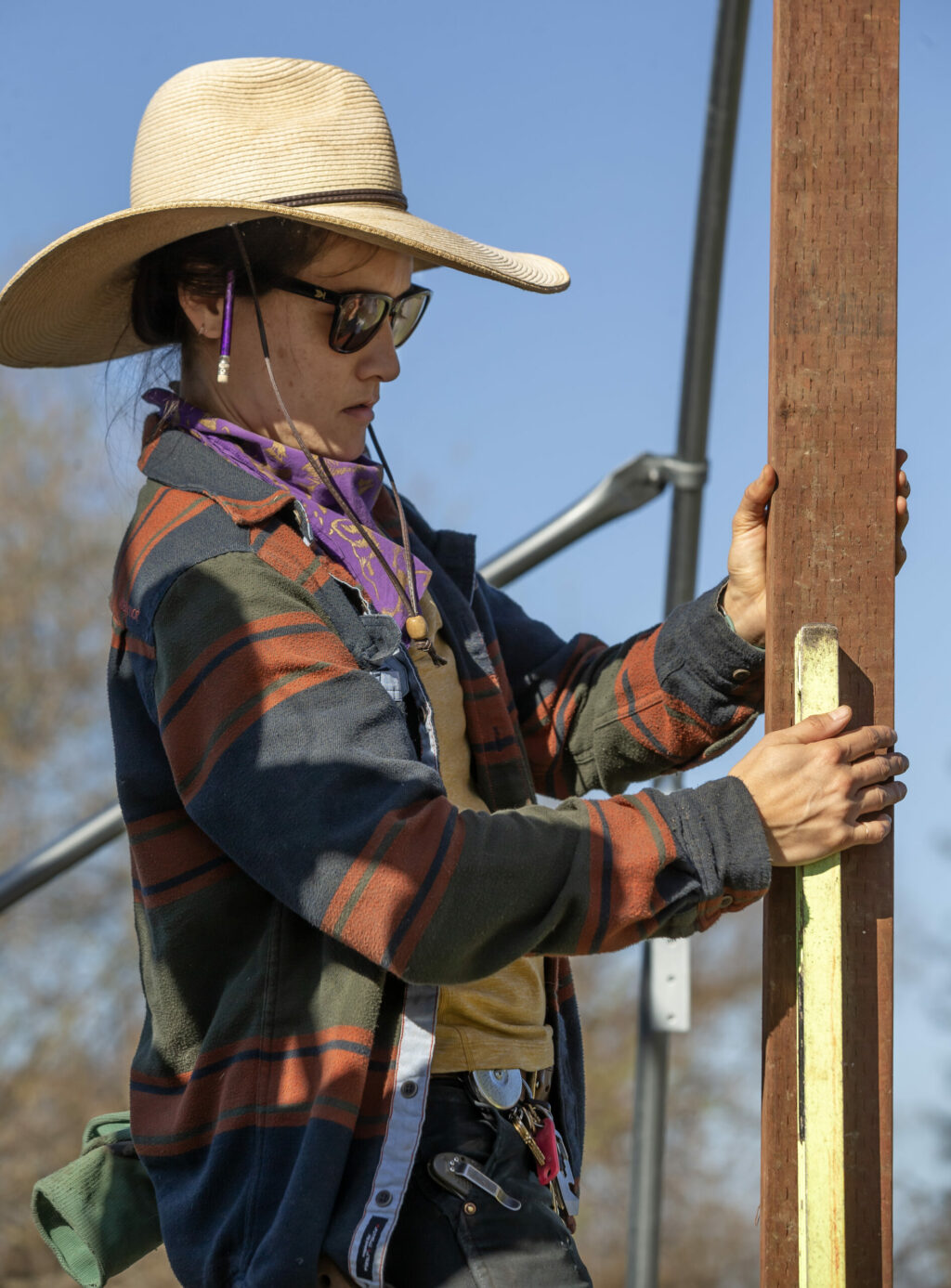
The challenge in accessing land is one of the reasons Yagi’s grandfather advised her father not to pursue farming. The deep familial connection to the land “skipped a generation,” she says. But now she’s bringing it back full circle, and her parents are supportive, coming out once a week during the high season to help her on the farm. The other day, she took her parents to Lunch Box, and her father picked up the menu and noticed Yagi Sisters produce highlighted. “Look, it’s you!” he said.
Carrying on what she learned from Hachmyer, part of Yagi’s mission is to host workshops, like the Farm Business Models seminar she held last October on her farm, helping novice farmers looking to connect with land and launch a farm. She also works with the nonprofit Community Alliance with Family Farmers (CAFF) to make sure smaller farmers are able to navigate new groundwater regulations coming in the near future.
“I think, as it happened with Japanese Americans back then, it’s happening with our immigrant populations now,” says Yagi. “Either you don’t have land, or you’ve been historically underserved.” Federal programs, she says, often favor larger farming operations, and haven’t adapted to serve the needs of smaller farms. A large majority of small-scale farmers can be classified as “socially disadvantaged farmers and ranchers,” a federal designation that addresses underserved community farmers, who have received more than $200 million in USDA grant funding over the past 15 years, Yagi says. “These farmers need our help more than ever.”
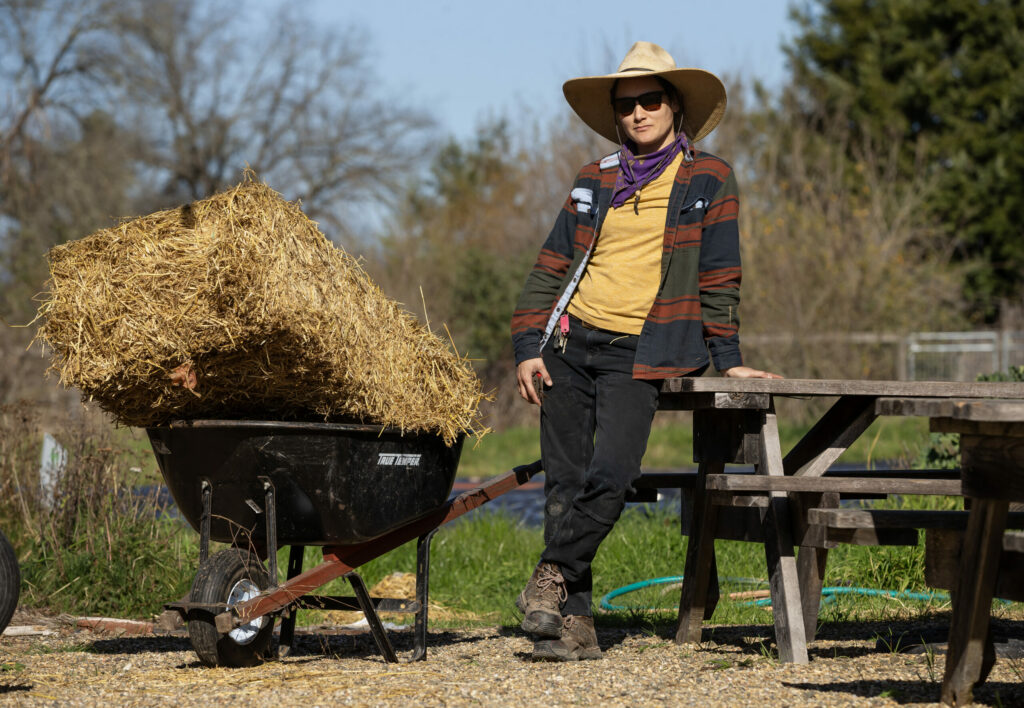
That help will come at a crucial time, as a new presidential administration works to upend DEI programs around the country, and uncertainty weighs on the minds of those seeking federal funding for equitable land access programs.
Seeing an opportunity, Berkeley-based Kitchen Table Advisors offers free business consulting services to small-scale farmers in Central and Northern California, advising on land and financing while connecting farmers to lenders, markets and local food hubs, such as FEED Cooperative, a farmer-led produce distributor in Petaluma. Lily Schneider, a senior business advisor for the North Bay with Kitchen Table Advisors, has worked with Sebastopol heirloom grain farmer Mai Nguyen of Farmer Mai, egg specialists Wise Acre Farm in Windsor, and Laguna Farm in Sebastopol, known for their CSA program.
Schneider’s goal is to reverse the USDA statistic that shows that 50 percent of small farms don’t survive beyond their first five years — and that out of those, only 25% make it to the 15-year mark. “We prioritize working with owners of small farms and ranches that have historically been excluded from resources and recognition within the food system,” says Schneider. “So that could be BIPOC farmers, women and gender nonbinary farmers, low-income farmers and immigrant farmers.”
Schneider has seen farmers connect to land in myriad ways. “It’s really about getting out in the community and talking to people and networking,” she says. “So much of it is word of mouth.” She explains that some of the best opportunities are found when farmers are able to connect with landowners who are not currently looking for someone to farm their land but are open to the possibility when approached. She also says that leasing land from retired farmers or people who have worked in agriculture are some of the best partners a farmer can hope for — “they understand the work,” she says.
Looking to the future, some farmers openly wonder if a softening in demand for grapes might lead to more land available for row crops.
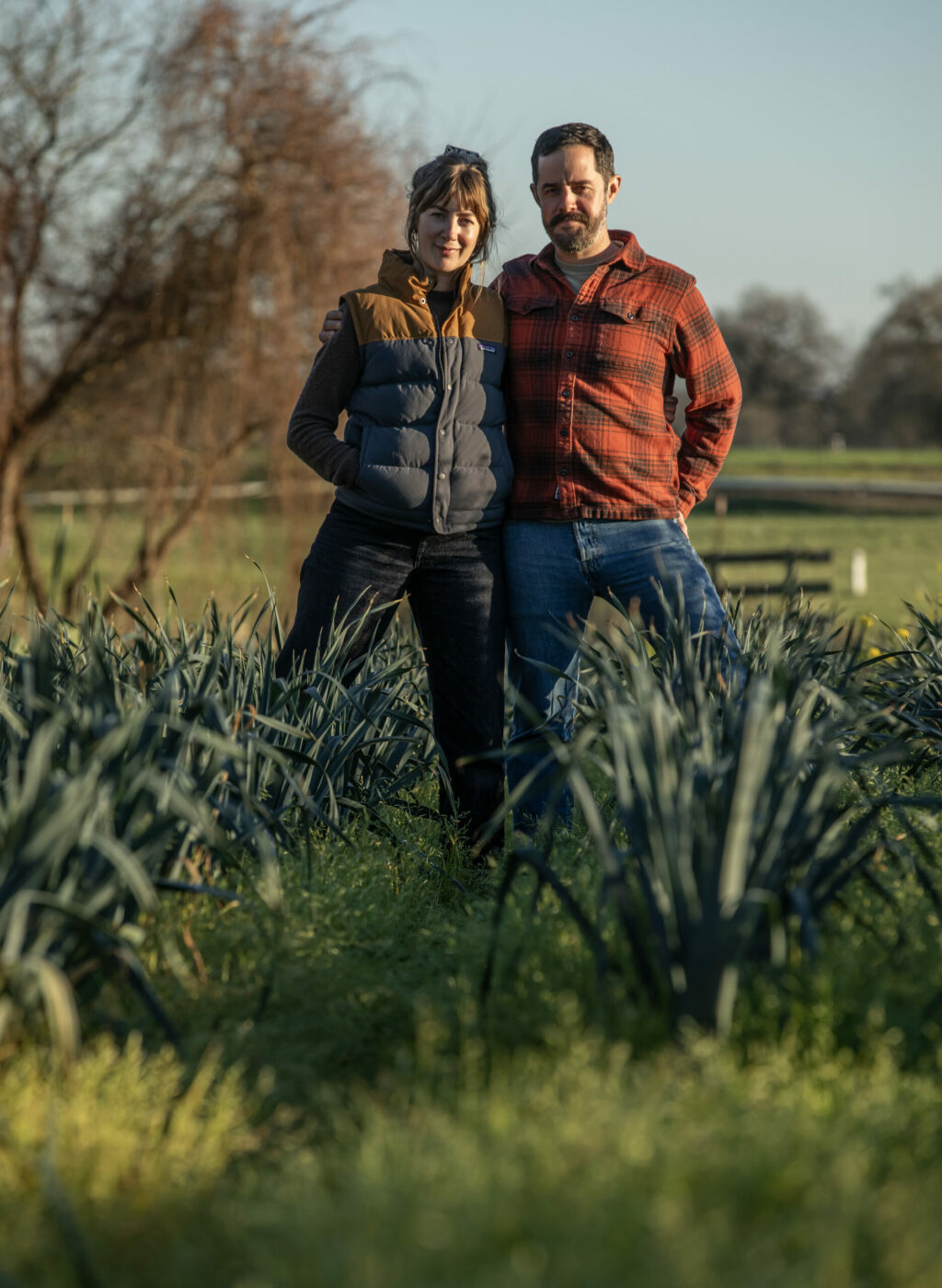
“In Sonoma County, if you look at parcel maps, it’s real cut up. There are not that many large parcels. And what there is, is mostly in grapes,” says Will Holloway, owner of Longer Table Farm, another Kitchen Table Advisors client. Longer Table has been running on 10 acres leased from the City of Santa Rosa, on the southwest side of town on Llano Road, since 2017. Holloway is actively looking for a larger 40-acre plot, he says, but is having a hard time finding anything.
Paul Bernier, the recently retired owner of Bernier Farms in Alexander Valley, also wonders about vineyard land conversion, especially after his son was able to sell just half his grapes last year, he says. Mike Mulas in Schellville chose not to plant thousands of empty acres with grapes after his Mulas Dairy shut down in 2024.
“We’re not above removing grapes,” says Holloway, who says he would consider replanting vineyard land with vegetables. “And that may be the way that that we end up going, but there’s just very little on the market. I think there’s maybe only been three or four really feasible sites that have been for sale in the last year or two.”
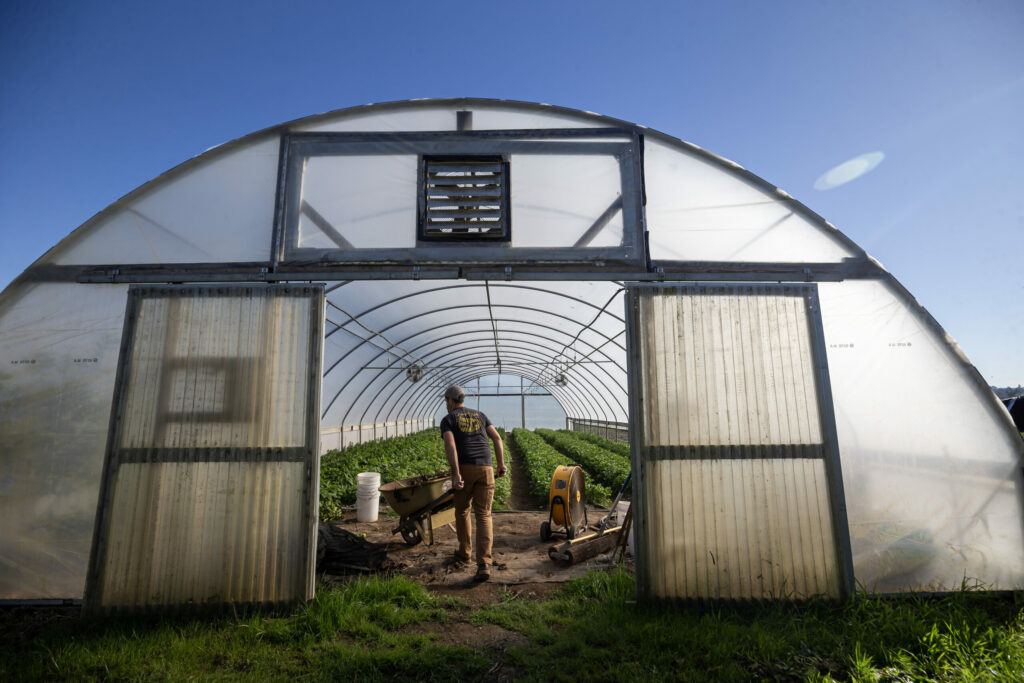
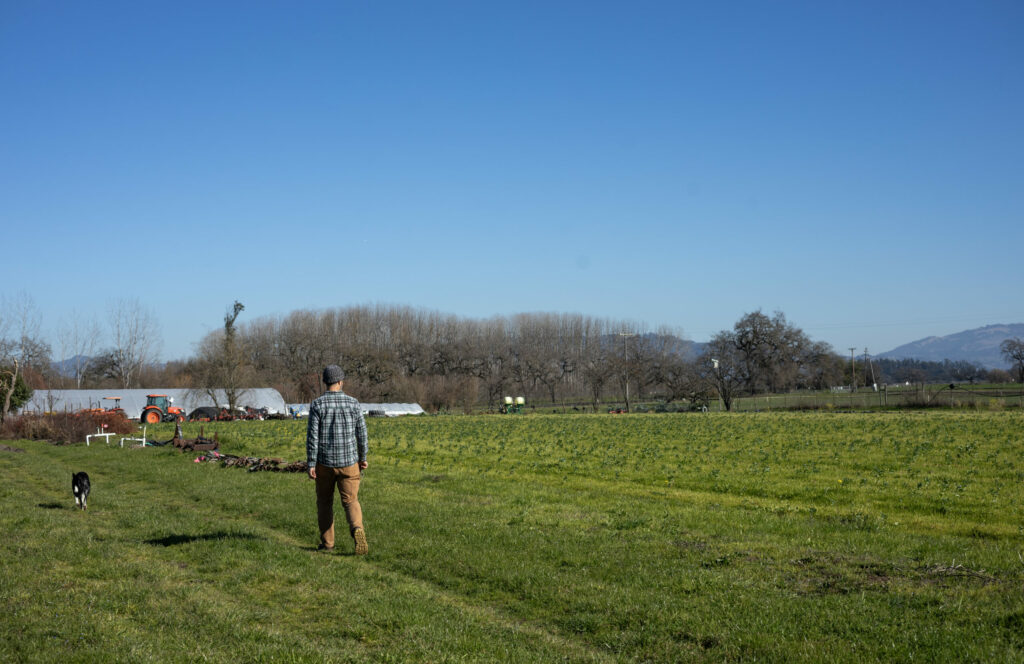
Over the years, Holloway has used a “shotgun approach” to finding land, relying on word of mouth, farmer connections, California FarmLink and CAFF online portals, and old-school message boards. This time around, he’s also working with a commercial ag realtor. “We’re just kind of poking around to see if any of the larger landholders want to offload anything. But, so far, no luck on that.”
For now, he is thankful for the land he has. After all, the actual farming itself, which is “not exactly easy on the body,” is hard enough on its own. Other farmers share the sentiment. “I don’t know how anyone can support a mortgage on this,” says Reyna Yagi. Despite all the work you put in, you’re lucky if you make any money, she says. Aleta Pierce at Beet Generation Farm says she’s been in the red for the last two years, with labor as her biggest expense. Market sales are down for her business, a trend she says she’s heard other farmers discussing as well.
Finding land to farm is just the first step in the journey. That’s easy to lose sight of, while rolling the dice on leases and elusive ag real estate, hoping to make a connection. “Now I’ve got the land, and I’m in three farmers markets and in with FEED,” says Tookey Farms’ Sam Tookey. “I know I can sell it all. Now, I just gotta figure out how to grow it all. That’s the hardest part.”
